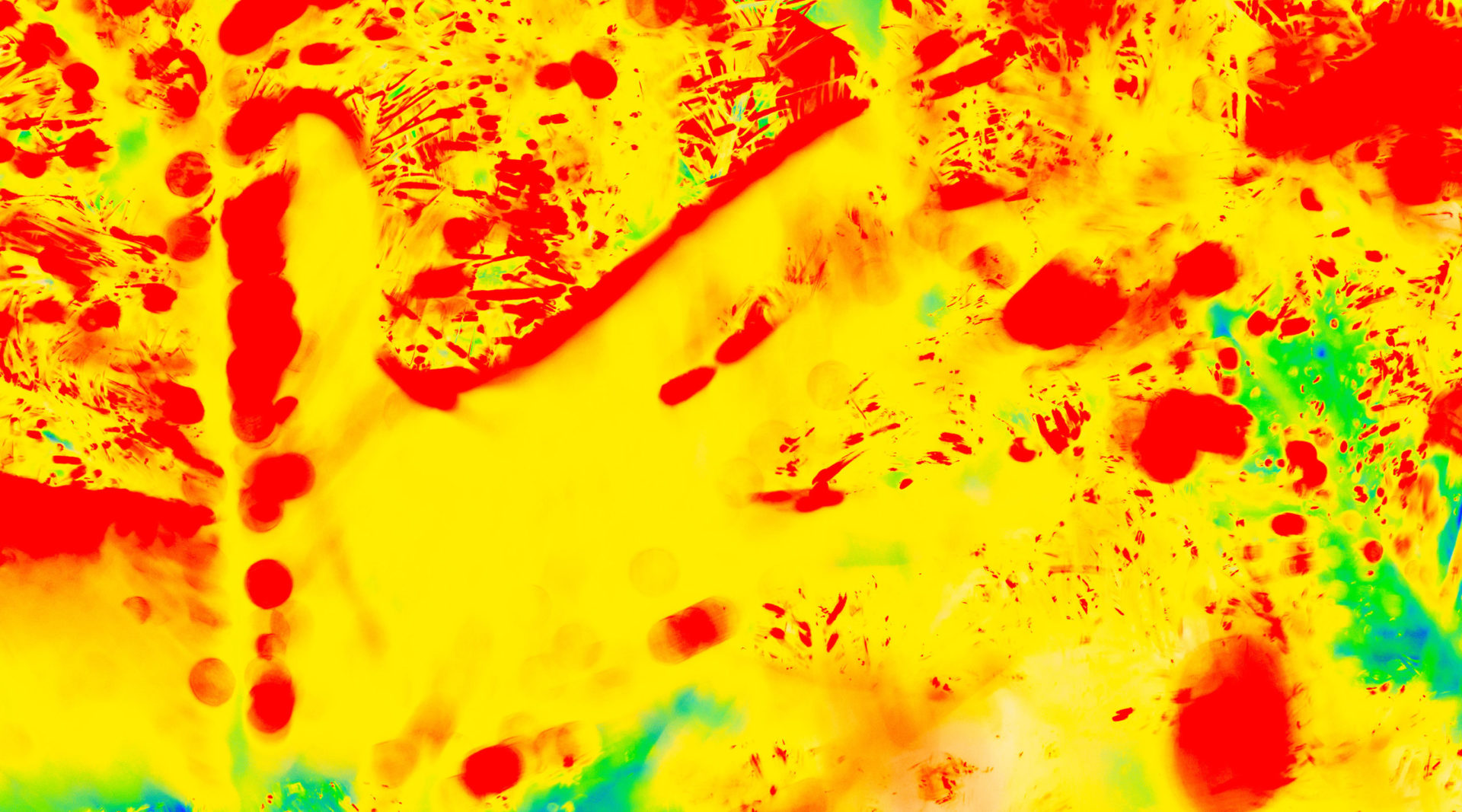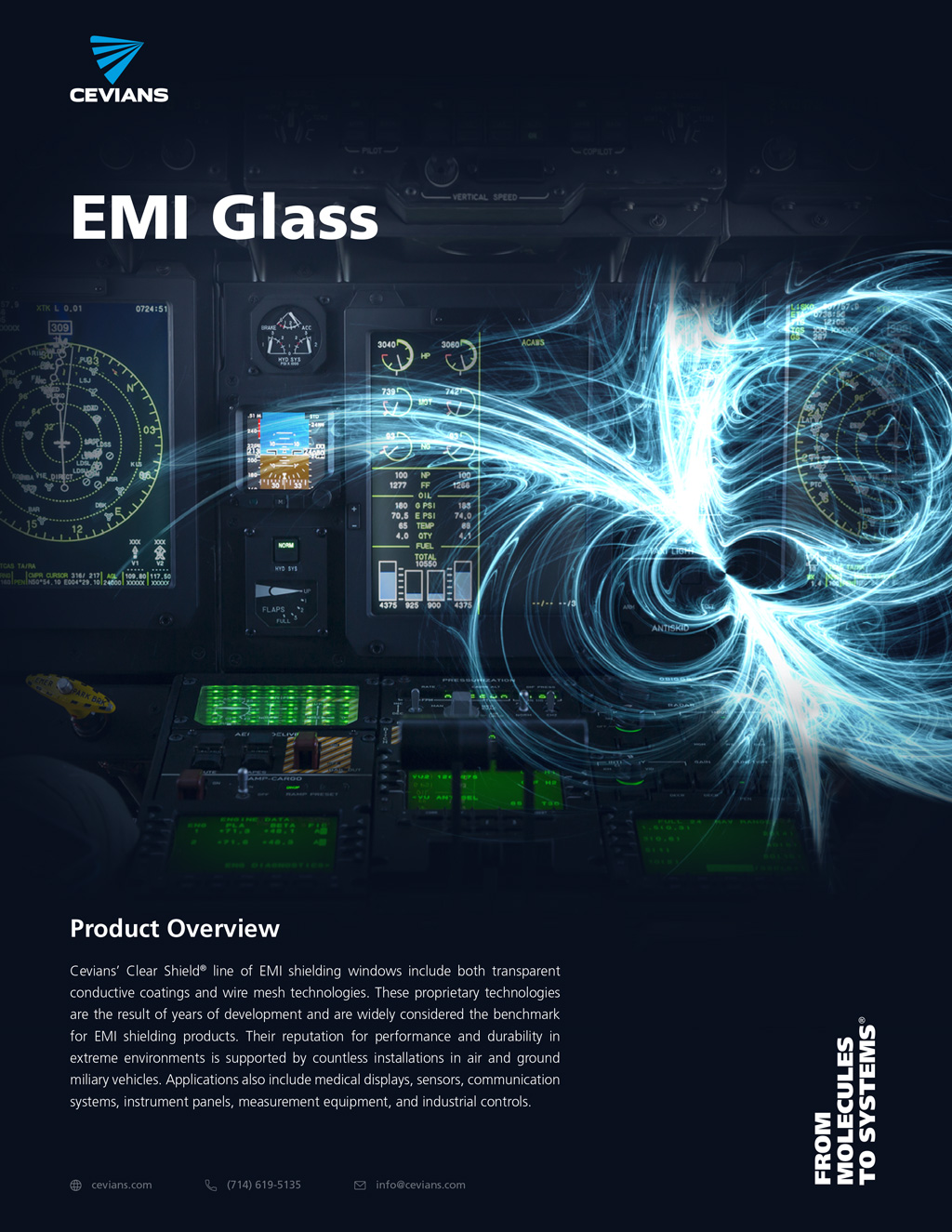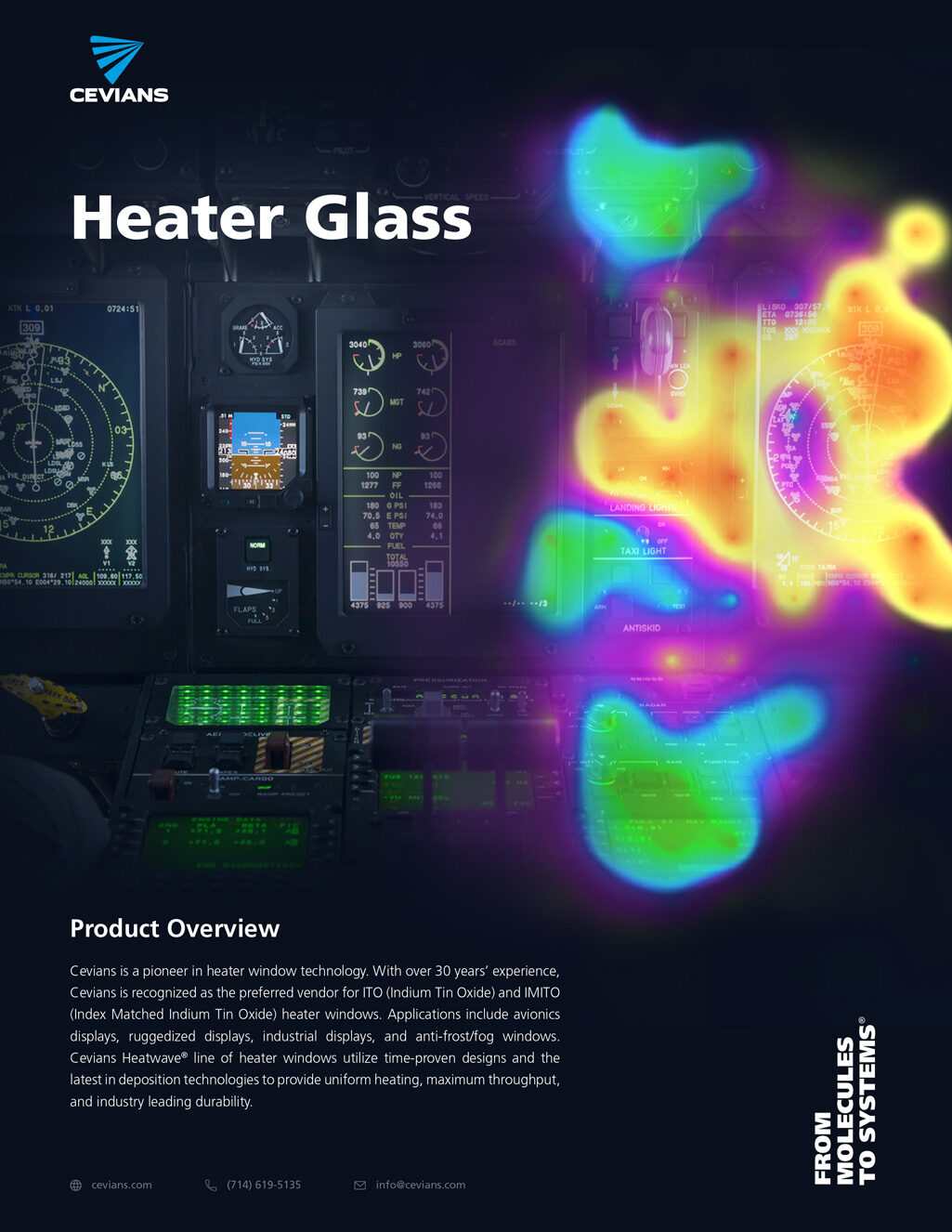
Conductive Coatings & Metallic Meshes
Conductive Coatings
Cevians designs and manufactures high transparency indium tin oxide (ITO), index-matched (IMITO), and double indexed matched (DIMITO) conductive coatings. The deposition process is highly monitored to ensure resistance uniformity. The resulting coated glass is used as either an electromagnetic attenuation transparent filter or as an actively powered optic that functions as a transparent heater, with high transmission and low reflection.
Conductive Mesh
Cevians have broad experience to deposit metallic mesh on glass or integrated as part of laminated components. The mesh provides unparalleled EMI attenuation. The opening per inch is accurately controlled and so are the geometry and orientation. Moire effects are prevented from design consideration. A family of mesh products is manufactured using a fused on glass process of very fine silver lines that are blackened in order to minimize reflections. This type of construction is also compatible with Cevians’ thin-film coating process which allows for additional coating over the mesh surface. Termination of the conductive layers is customized to each application and can include soldered on wires or conductive stripes to silver bussbar. In EMI applications, the conductive layer can be terminated on the entire perimeter in various geometries, including different edges; L-shaped and U-shaped. The optical component can also be finished to include black masks and edge coatings.
Material Composition and Deposition
Precise material thickness uniformity prevents resistance and heat concentration ensuring long-term performance of the optical component. Electrical contact to the conductive layer(s) is achieved via fired-on glass silver frit materials and custom patterns allowing for limitless part geometry and electrical termination.
Material Purity Control
Our material control process minimizes undesired migration of In and Sn ions which could reduce conductivity in the connection area. The formation of Ag3Sn intermetallic compound causes the indium tin layer to become tin-deficient which increases the resistance of the ITO overlayer. This process is critical for the long-term operation of the component, preventing premature failure.
Technical Summary
- Index matched to specific interface indexes in order to maximize transmission and minimize reflections
- Average Transmission 94% from 400nm to 700nm
- Resistivity 10ohms/SQ
- 4ohms/SQ ITO index matched to 1.52
- Average Transmission 90% from 425nm to 675nm
- Sheet resistivity from 1 to 150 ohms per square.
- Specular reflection < 0.8%
- Diffuse reflection < 0.04%
- No visible Moire interference for displays up to ~200 pixels/inch
- Blackened Copper or nickel wire
- Mesh diameter 15~25 microns
- 70 or 90 mesh per inch
- Low reflection: <1.2% specular and < 0.2% diffuse
- Transmission 88~90%
- Attenuation > 50dB at 1 - 1000MHz
- Wide operational temperature: -30 ~ 70 degree
- Thermal Cycling: MIL-C-48497, 4.5.4.1
- Salt Solution: MIL-C-48497, 4.5.5.2.
- Humidity exposure: MIL-C-48497
- Coating adhesion: ASTM D 3359-83 method B
Coating
Mesh

Download our Product Sheet
EMI Glass
Cevians' Clear Shield® line of EMI shielding windows include both transparent conductive coatings and wire mesh technologies...

Download our Product Sheet
Heater Glass
Cevians is a pioneer in heater window technology. With over 30 years' experience, Cevians is recognized as the preferred vendor for ITO (Indium Tin Oxide) and IMITO (Index Matched Indium Tin Oxide) heater windows...